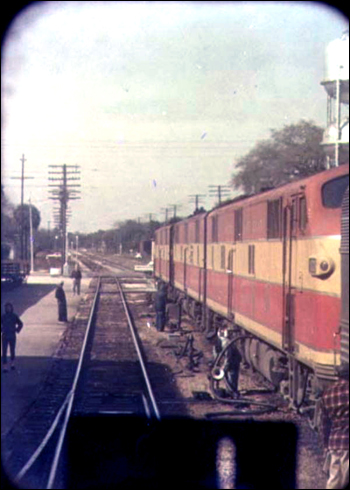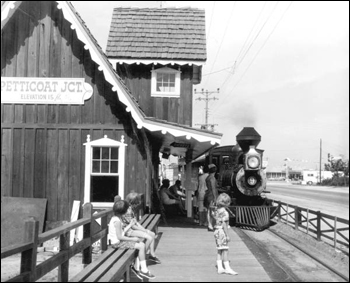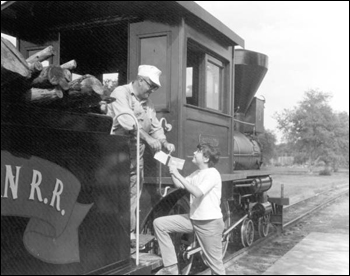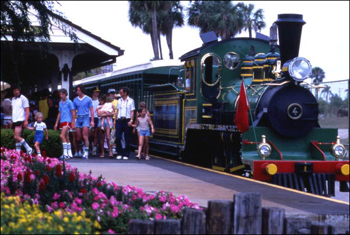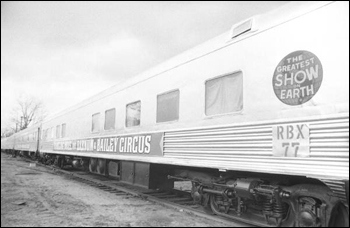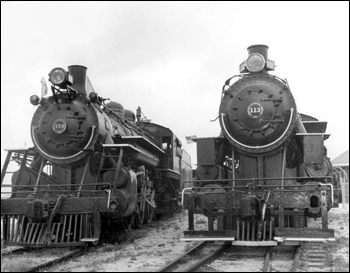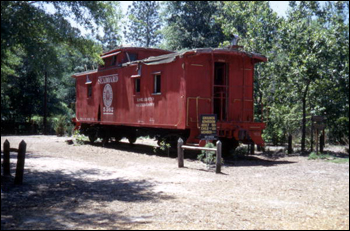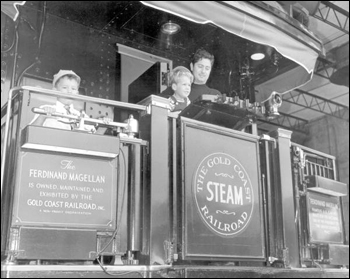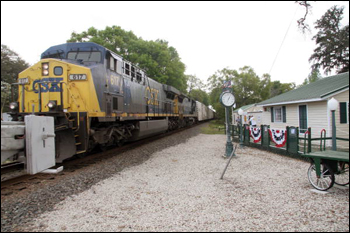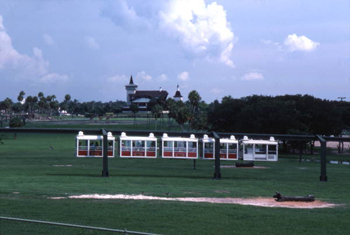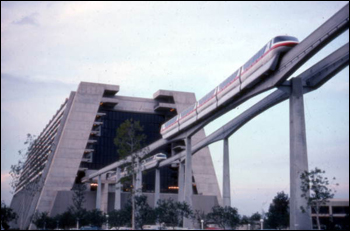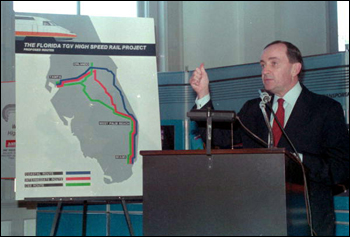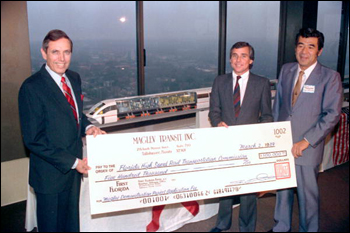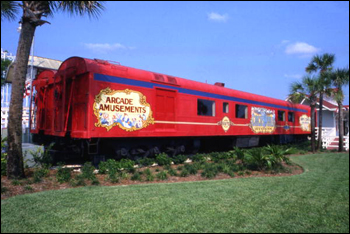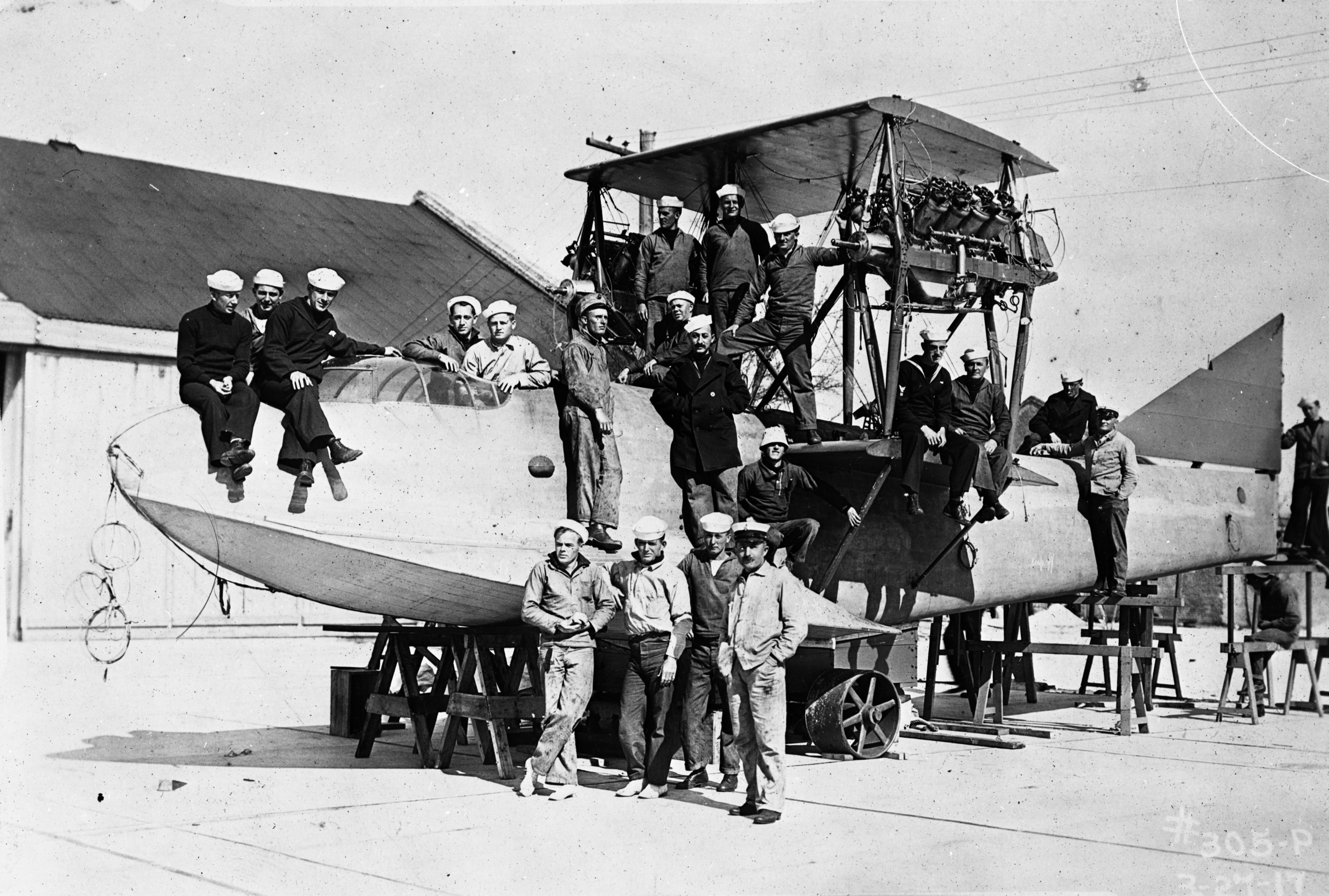Photo Exhibits
Photo exhibits spotlight various topics in Florida history, and are accompanied by brief text intended to place selected materials in historical context.
Tracks Toward the Future
Scenes from Florida’s Railroad History
End of an Era, Rails to the Future
The era of frequent rail travel in Florida had already ended by the 1960s. Revered for their importance to the history of state, trains became celebrated in numerous museums in Florida and became common features of the state's many theme parks and tourist attractions.
Parks and exhibits sometimes displayed more romantic, old-fashioned train designs; at other times they showed trains in futuristic forms, representing the ongoing dream of technological achievement.
Throughout the 1980s and 1990s, different groups advocated for the development of high-speed railways in Florida. After more than two decades of organization, lobbying, work by state officials, and development proposals by private companies, the dreams of state-of-the-art high-speed rails connecting Florida's cities have yet to be realized.
"Champion" fueling: New Smyrna Beach, Florida (1960)
Image Number: PR09213
Petticoat Junction railroad station: Panama City Beach, Florida (1967)
Image Number: C670678
Young visitor gets autograph from train engineer at Pioneer City: Davie, Florida (1967)
Image Number: C670175
Pioneer City was a tourist attraction that featured a faux western town, staged gunfights, a train ride, and a saloon. It operated for only a few years in the 1960s.
View showing visitors leaving train at the Busch Gardens amusement park in Tampa, Florida (after 1971)
Image Number: COM01410
The Busch Gardens Serengeti Express Railroad opened in 1971, becoming the park's second major ride following the monorail. The train takes guests on a two-mile perimeter ride around the 335-acre park. Along the way, guests on the train ride can see hundreds of African animals on the Serengeti Plain, and other fascinating attractions at the park. The four locomotive engines are fueled by clean-burning propane gas. Two engines are replicas of the ones used in Africa in the early 1900s, while the remaining two are similar to those used in the American Old West
View of Ringling Bros. and Barnum & Bailey's train cars: Tallahassee, Florida (1985)
Image Number: FFL0976
Photo author: Deborah Thomas
Gold Coast Railroad engines 153 and 113 : Fort Lauderdale, Florida (ca. 1970)
Image Number: RC13515
Engine 153 is a 1922 Pacific-type passenger locomotive. It was formerly of the Florida East Coast Railway (F.E.C.), but was retired in 1938. During the deadly 1935 hurricane, Engine 153 led the last train that made it back to Miami before the tracks were washed away. As property of U.S. Sugar, it was donated to the Gold Coast Railroad in 1957. Engine 113, built in 1913, was also formerly owned by the F.E.C. and U.S. Sugar Corporation, who donated it to the museum in August 1968.
Seaboard Railroad caboose at the Tallahassee Jr. Museum (1972)
Image Number: COM03443
Rear platform of the Ferdinand Magellan passenger car: Fort Lauderdale, Florida (ca. 1970)
Image Number: RC13519
This is the only Pullman car custom built for the exclusive use of the President of the United States.
First built in 1928, it was rebuilt as presidential car in 1942. The train car was surplussed in 1958, given to the Florida Department of Commerce in 1959, then given to the University of Miami. It was displayed by the Gold Coast Railroad and when Gold Coast Railroad moved to Fort Lauderdale in 1966, ownership of the car was transferred to Gold Coast Railroad.
CSX locomotive 617 passing by the Railside House Museum: Hawthorne, Florida (2006)
Image Number: DM6136
Photo author: Dale McDonald
The museum is owned by Ron Kelly and was built to house model trains.
View of monorail at the Busch Gardens amusement park in Tampa, Florida (1977)
Image Number: COM01500
The monorail at Busch Gardens opened in 1966. The small, suspended system operated boxy trains that used two propane-fired, air-cooled, aluminum Corvair engines per train to produce the AC power necessary for the electric motors.
View showing monorail near Disney's Contemporary Resort hotel at the Magic Kingdom in Orlando, Florida (after 1971)
Image Number: COM03540
The monorail system opened in 1971 with two routes and with Mark IV monorail trains, expanded to three lines in 1982, and switched to Mark VI trains in 1989.
Robert Blanchette, President of TGV of Florida, Inc presents his proposal for the Bullet Train: Tallahassee, Florida (1988)
Image Number: MF0020
Photo author: Mark Foley
Accompanying note: "Robert Blanchette, President of TGV of Florida, Inc., gives the thumbs up sign at the end of his presentation Monday as he presented his bullet train proposal to the Florida High Speed Rail Transportation Commission. TGV was one of four who presented proposals. The chart at left shows TGV's route proposals."
Akio Makiyama, Chairman of Maglev Transit, Inc (right) presents a check to Governor Bob Martinez (left) and Chairman Malcolm Kirschenbaum (center right): Tallahassee, Florida (1988)
Image Number: MF0021
Photo author: Mark Foley
Accompanying note: "Florida Gov. Bob Martinez, left, along with Fla High Speed Rail Transportation Comission Chairman Malcolm Kirschenbaum, center right, accept a $500,000.00 check from Maglev's high speed train model. The one-half million investment by Maglev covers the commission's cost to review their application to begin the process toward Florida's first high speed rail system, proposed first for the Orlando area."
Circus World antique railway car: Orlando, Florida (ca. 1980)
Image Number: COM01654
The antique Barnum and Bailey train cars housed a display of circus memorabilia. Circus World was built in 1973 by the Felds (then owners of Ringling Brothers) to combine circus-based shows and amusement park rides with a new winter quarters for the Ringling Brothers Barnum and Bailey Circus. It was later sold to Mattel, Inc., who sold it to developer Jim Monaghan in 1984. Monaghan sold it to Harcourt Brace and Jovanovich in 1986, who shut the park down and rebuilt it as Boardwalk and Baseball, which opened on February 14, 1987. Harcourt Brace and Jovanovich sold its theme park assets (which included SeaWorld and Cypress Gardens) to Busch Entertainment Corporation on September 28, 1989, and Busch closed Boardwalk and Baseball on January 17, 1990.

 Listen: The Bluegrass & Old-Time Program
Listen: The Bluegrass & Old-Time Program